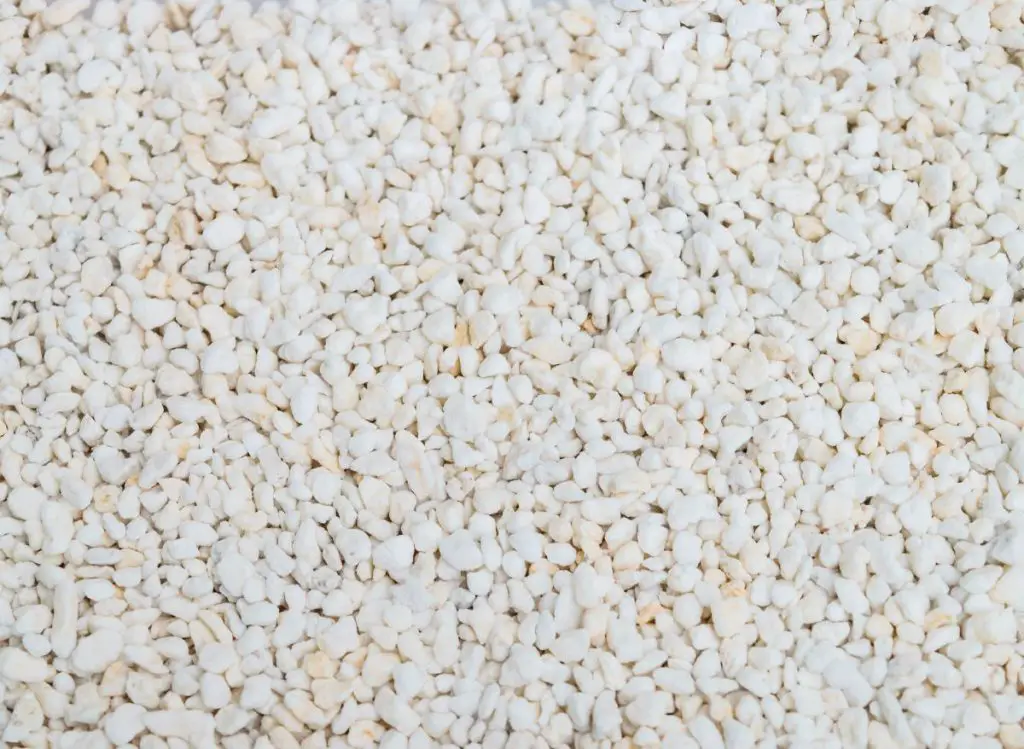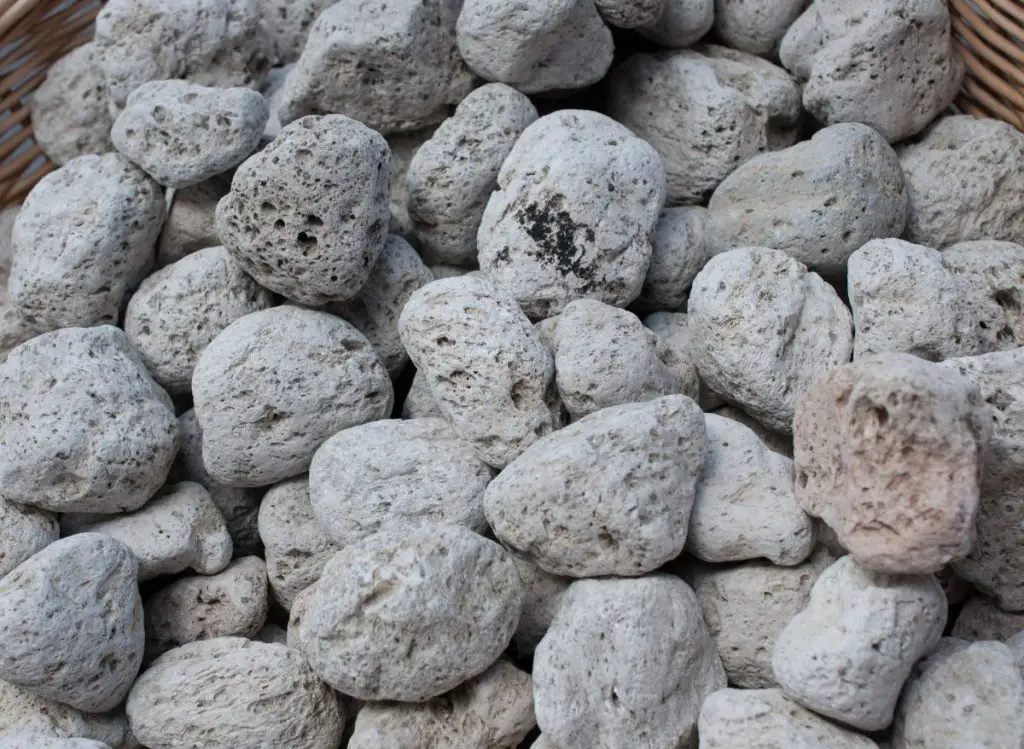Growing plants may seem easy, but that is not the case, especially for succulents. You must meet the species requirements for the best health. Some plants require well-drained soil for water storage. Meanwhile, others require high airflow throughout the day.
Perlite and pumice are excellent growing mediums that you can choose from. So, perlite vs. pumice, which one is better for you?
Pumice is heavier than perlite, which forces it to stay mixed into your soil so it will not float to the top of your plants’ containers and blow away. In addition, pumice doesn’t decompose or compact, so you never need to replace it, compared to other growing mediums, including Coco Coir and Peat Moss, which typically tend to rot.
To get these factors right, you must use a growing medium. You can combine the substrate with your potting soil to create a healthy mix. Besides that, you may also use the growing medium individually for hydroponics.
Are you looking for an effective growing medium for hydroponics? Here are the 16 growing mediums to choose from.
What Is Perlite?
Perlite is created from a volcanic rock that explodes into multiple pieces upon heating. These small white pieces can be added to a planting pot to support the plant in hydroponics. You can also mix the material with soil to create a healthy soil medium.
This material is white and resembles Styrofoam pieces. So it may turn to powder in your hand if you don’t handle the medium with care. The best part about perlite is that it is non-toxic and clean. You can use this medium to avoid planting issues such as mold and root rot.
Many people also call perlite volcanic glass or sponge rock because of its origins. This medium is a type of solidified magma.

What Is Pumice?
Pumice is also created from volcanic eruptions. It is a volcanic glass that is porous due to the cooling and depressurization of the lava. The material experiences change in properties in the environment outside the volcano. You can use it without soil for hydroponics and with soil to form an excellent potting mix.
The material ranges from white to dark gray if it is natural. The exact shade depends on the mining area of your pumice. Many gardeners also use this material to cover the top of the soil for decoration. Pumice is more attractive than most other growing mediums.
This medium can also be used for making beauty products and home items. So pumice is readily available on the market.
See also: Are Oasis Cubes Any Good? (Include their pros and cons!)

Perlite Vs Pumice: What Are The Differences And Similarities?
Pumice is generally a heavier material that doesn’t float or blow away as quickly as perlite. In addition, pumice lasts longer than perlite. However, pumice can be harder to find in your local store and generally costs more than perlite.
Let’s look at the similarities between perlite and pumice.
Similarities Between Perlite And Pumice
Here are the similarities between the perlite vs pumice:
1- Same Origins
The primary similarity between perlite and pumice is that they both are a type of volcanic glass. Their origins are the same because they are formed by volcanic eruptions.
The color of the two materials may also be similar.
2- Overlapping Of Colors
Perlite is mainly white and does not come in other shades. However, a pumice’s appearance can vary. It is similar to perlite when in a white shade. The two mediums can also combine with soil to form potting mixes.
Grey is another color that is common to both plants. Besides that, other versions of pumice don’t overlap with perlite’s appearance.
3- Low Water Holding Capacity
A high water retention capacity is essential for growing plants that require frequent watering. Unfortunately, you can use perlite and pumice for such species.
The two materials have low water holding capacity, so they don’t form well-drained soil.
4- High Aeration Capacity
The two growing mediums have the same origin and similar properties. This is why they both have a high aeration capacity.
You can use perlite and pumice to improve airflow easily. They will allow more air to reach the roots and prevent specific diseases.
See also: Best Ways Of Making Pumice Soil Mix.
Differences Between Perlite And Pumice
Besides these similarities, the two growing mediums also have significant differences. Here’s what you must know about them:
1- Perlite And Pumice Differ In Their Uses
Pumice and perlite are used for gardening and other horticultural activities. You can use them for draining soil, providing support to plants, keeping pests away, and much more. Both materials are used mainly to help succulents grow healthily.
However, the uses of pumice are more widespread in the gardening sector. It has better application with soil because the medium can combine with different types. You may use pumice with clay or sandy soil to meet your plant’s needs.
Perlite is readily available in the market and used by many people. However, this medium’s uses are relatively lower than that of pumice. This is because of the lack of some features that are present in pumice.
2- Perlite And Pumice Differ In Their Weights
Both of these growing mediums are porous and come from volcanic eruptions. However, pumice is heavier than perlite. This allows you to add the material to the soil with more confidence. The medium will incorporate into the soil easily and will not blow away from the wind.
The heaviness allows pumice to prevent your pots from falling over due to wind or other reasons. So you can easily use this medium for outdoor plants. Perlite is relatively lightweight, so it can disperse from the pot with wind easily.
However, the lightweight also makes perlite more suitable for indoor plants. You can easily add it to small pots by pressuring the root system. It can also be used for decorating your bonsai forest.
3- Ease Of Manufacturing
Pumice is the winner in this category because it is easy to produce. The porous rocks are obtained from volcanic eruptions. Then, they are collected and categorized into different grades and sizes. These organized rocks are sold commercially without processing.
However, perlite is not produced easily because it has to be crushed and heated after mining. You must use high temperatures to form the small white pieces. This means that the growing medium requires extensive processing before being sold.
4- Price: Perlite Is Cheaper Than Pumice
The price of the two mediums differs significantly. You may expect perlite to have a higher price because of extensive processing measures. However, that is not true. In most countries, this medium is less expensive than pumice because of more availability.
Of course, the price changes depending on the region you live in. Some countries sell natural pumice at a lower price than perlite. The cost difference mainly depends on the supply and demand of the medium in your region.
5- Lifespan
The lifespan of these growing mediums is also different despite similar origins. Pumice lasts longer than perlite because it does not decompose. This means you can use the material without the need to replace it.
So you can save money by getting this medium. However, remember pumice may be more difficult to find in stores as compared to perlite. Meanwhile, perlite has a shorter lifespan because it can cause crop failure upon prolonged use.
Salts start to build up in the rocks, and chances of pest infestations also increase when you use perlite for long. This is why you should replace the material every one or two years.
Perlite Vs Pumice: Which One Is Better?
Perlite and pumice are excellent mediums for growing bonsai and succulents. You can choose them due to their high aeration capacity and to dry out the soil completely between watering sessions. Some plants have this requirement for growing well.
However, pumice is better for growing outdoor plants because it is heavier. So the medium will not blow away by the wind. Meanwhile, perlite disperses easily, so it is better for growing indoor plants.
See also: Are Oasis Cubes Better Than Rockwool? (Let’s find out now!)
Final Thoughts
These are the main differences and similarities between perlite and pumice. Both mediums have low water retention capacity and high aeration capability. So you can use them for growing the same plants in different environments.
Perlite is also cheaper than pumice, so you can use it for a high number of indoor plants. The best way to decide on a growing medium is by considering the growing requirements of your plant species.


